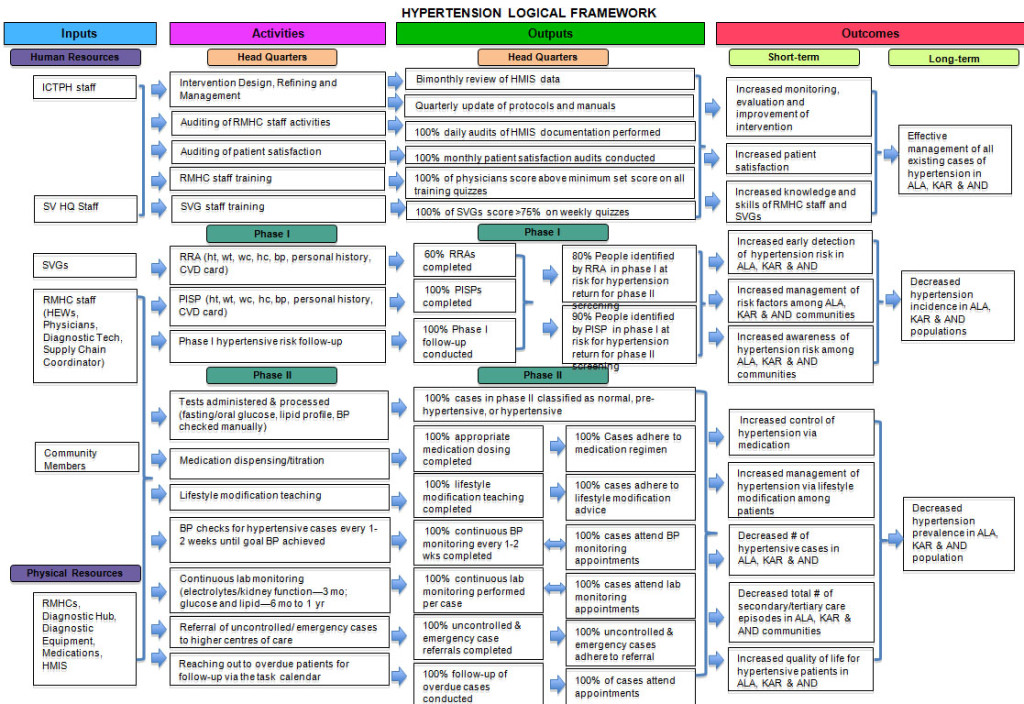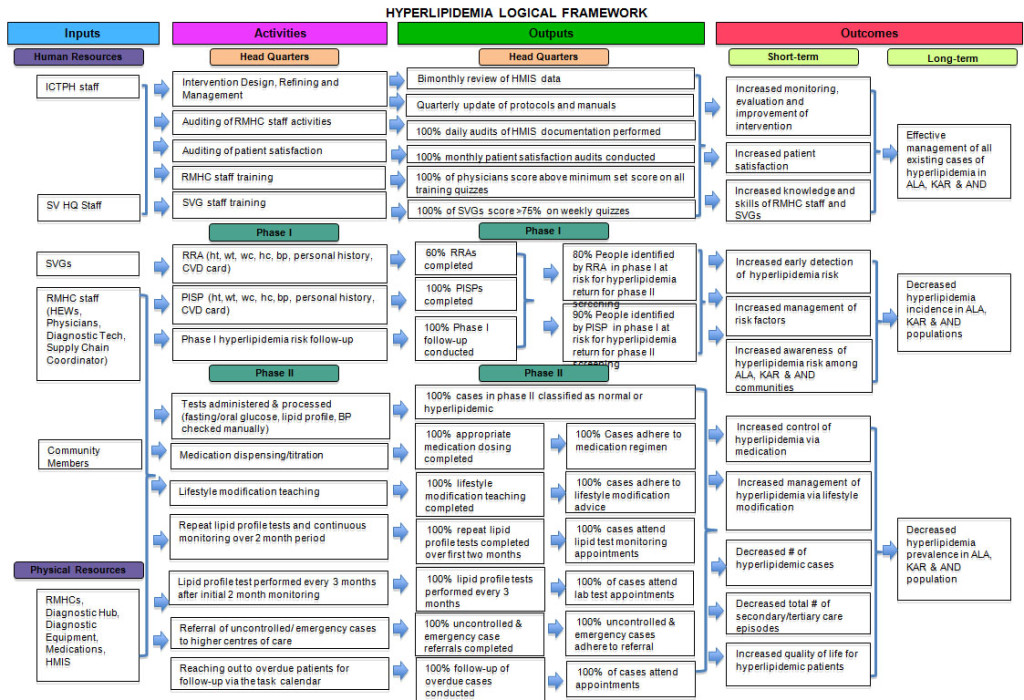By Aimee Latta
While approximately 53% of total deaths in India are due to non-communicable diseases (NCDs), cardiovascular diseases (CVD) alone account for 25% of overall mortality in India1. These statistics are alarming and indicate a severe, rising burden on health systems and population health in India if the root causes are not addressed appropriately and in a timely manner. Recognizing the growing morbidity and mortality rates of CVD within India and the current emphasis on tertiary care, ICTPH designed a CVD intervention focused on primary and secondary prevention, which educates community members on the importance of lifestyle modification to prevent CVD and detects CVD risk in the communities they serve through screening of hypertension, diabetes, and hyperlipidemia. Additionally, as part of the intervention the community members identified with hypertension, diabetes, and/or hyperlipidemia are treated with medication and regularly followed up by Sugha Vazhvu Rural Micro Health Centre (RMHC) physicians to monitor their progress.
The CVD intervention was first launched in Andipatti RMHC on 24th May, 2011, followed by CVD intervention launches on 6th June, 2011 at Karambayam and Alakkudi RMHCs. With the intervention in its sixth month, ICTPH staff were eager to learn about the progress and delivery of the CVD intervention. As a result, I was contracted as an external evaluator to conduct a process evaluation of the CVD intervention. With a clinical background in nursing, an MSc Public Health from the London School of Hygiene and Tropical Medicine, and experience conducting health related research in academic and NGO settings in the USA, South Africa and Jordan, ICTPH felt my background was ideal for taking the evaluation forward.
My first few weeks at ICTPH were spent familiarizing myself with the structure and services of ICTPH and Sugha Vazhvu and the CVD intervention itself. Spending time at headquarters and in the field provided me with a rich understanding of the mission of both organizations and how the shared vision is being carried out at the planning, implementing and management level. Reviewing CVD documents and protocols and meeting with headquarter staff provided me with an understanding of the intervention components, while visiting RMHCs and following Sugha Vazhvu Guides during the Rapid Risk Assessment (RRA) allowed me to see the CVD intervention in action.
Once I gained a good understanding of how the CVD intervention functions within the organizations, I met with members of ICTPH and Sugha Vazhvu individually and collectively to define and refine the goals of the intervention and purpose of the evaluation. After clearly stated CVD intervention goals were agreed upon, I was able to work with ICTPH staff to create three different logical frameworks for each disease path within the CVD intervention. Since the CVD intervention primarily targets hypertension, diabetes, and hyperlipidemia, three separate frameworks were created in order to account for variations in treatment across the diseases and to measure the specific aspects of delivery and uptake of services for the individual disease protocols. The logical frameworks have been designed for use as a tool for monitoring and evaluation activities throughout the lifecycle of the CVD intervention.
Below all three logical frameworks are displayed in a diagram format. Vertically, we see all the inputs, activities, outputs and outcomes required for the intervention to take shape. By following the model horizontally, starting from the left, we see the sequential relationship between the inputs, activities, outputs, and outcomes, which is expected in order for the overall goal, or the long-term outcome, to be achieved. Activities and outputs have been organized according to headquarter and RMHC events. Further, RMHC events have been labeled as either phase I or phase II as the CVD intervention is designed to be implemented in two phases. While the CVD intervention has been broken down into three logical frameworks, given that the risk factors for all three diseases remain the same, we see implementation of the intervention begins with pre-consultation and Rapid Risk Assessment (RRA) across each disease group. Since screening protocols and headquarter activities are standard amongst the three diseases, there is not much distinction amongst the three logical frameworks until Phase II, where diagnosis is determined and the individual disease protocols are then followed.
Hypertension Logical Framework
Diabetes Logical Framework
Hyperlipidemia Logical Framework
Currently, I am undertaking quantitative data collection and analysis for the process and output indicators, which will be followed by qualitative data collection and analysis, including interviews with key staff and community members. All CVD evaluation activities are based on utilization-focused evaluation principles in order to ensure the outcomes of the evaluation will be constructive to the organization and be useful to improvement of the CVD intervention. Stay tuned!
1. WHO. NCD Country Profiles, India 2011.





Leave a Reply
Be the First to Comment!